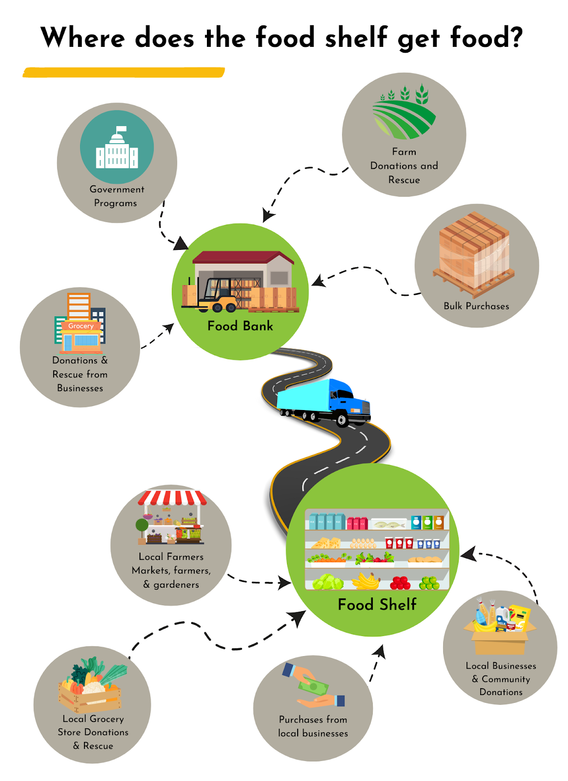
Where do food shelves get food?
There are over 400 known food shelves in Minnesota, from small, rural areas to large urban centers. A whole network is needed to supply those food shelves with fresh and healthy food across the state. Food shelves generally are connected to a regional food bank. The food bank acts as a large warehouse where they can collect food from many different areas including farmers, government programs, and donations from companies. They also help save good food from ending up in landfills by accepting rescue food. This rescue food often is almost perfect and is completely safe to eat but due to manufacturing or retail guidelines cannot be sold. The food bank is also able to purchase large quantities of food directly from farmers and businesses at a discount to help feed millions of Minnesotans.
The local food shelf is able to order food at a discounted rate from the food bank which is delivered via a semi-truck designed for transporting refrigerated and frozen foods. Local food shelves are also able to collect donations from local businesses, farmers, gardeners and community members as well. Monetary donations are always needed for food shelves to operate. Due to this network of discounted food that is available to food shelves, the money the food shelf spends on food can go up to four times further than donations purchased at the grocery store.
Every food shelf gets food differently. They may use anywhere from one of these methods to all of them. To find your local food shelf check out Hunger Solutions Find Help.